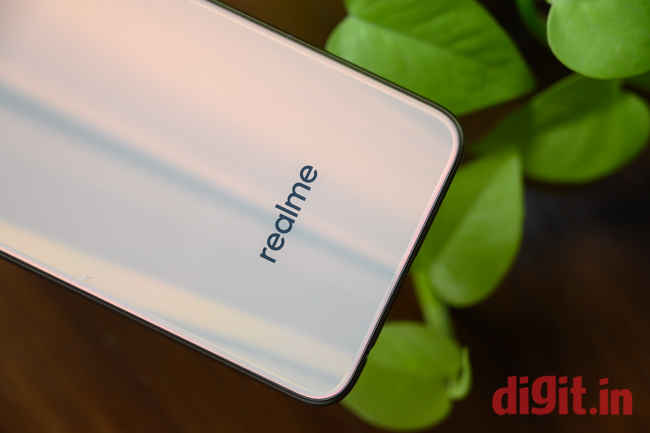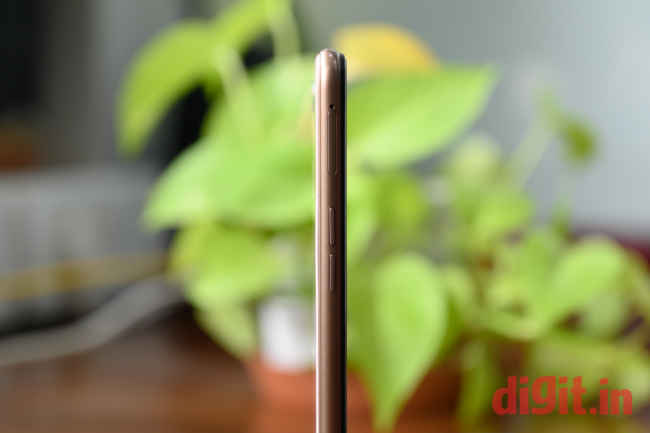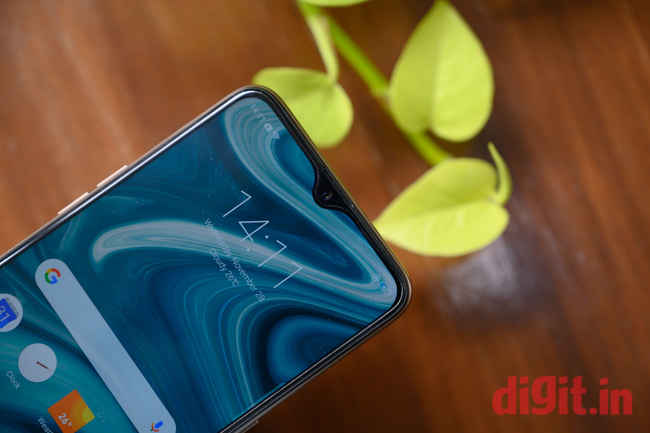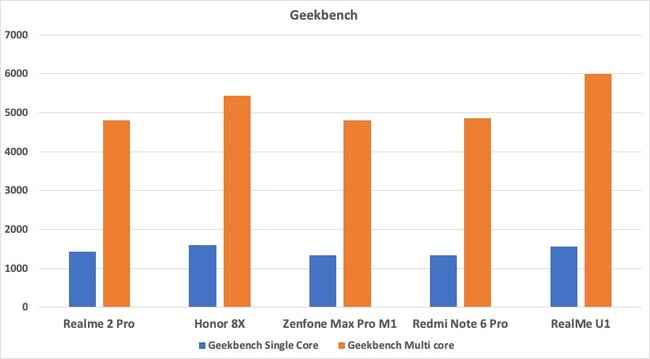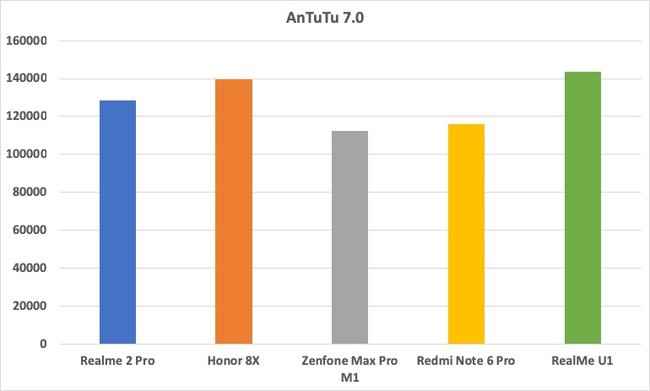Realme U1 Review : Satisfactory, with a few caveats
The Realme U1 is a real mixed bag of a smartphone. While the MediaTek Helio P70 chipset that powers it allows the phone to breeeze through most daily tasks, it does falter when it comes to heavy gaming. The camera performance is impressive, but does not offer any customisation options. The battery life is good enough to get you through the day. The Realme U1 is a decent phone, but the 4GB variant will struggle eventually.
Build and Design
The Realme U1 could just as easily be an Honor phone. No joke. The company has not used the diamond cut finish and instead, has gone for a plain look on the back. The uniqueness is in the colour treatment. We received the “Fiery Gold” variant and the back reflects light in a way that it appears to be a multi-coloured surface. Honestly, it doesn’t matter if Honor did it first, Realme U1 does it well too. The gold variant is personally not a favourite, but there are people out there who will like the gold-pink tones with a silver lining around the fingerprint sensor and the camera module.
The Realme U1 has a glass-sandwich design
The frame of the U1 is painted a slightly darker shade of gold in comparison to the back. The frame itself isn’t made of metal, and instead feels more like a polycarbonate shell. The display on the front doesn’t sit flush with the frame and instead, sticks out just a little. This makes us wary of its durability, because in the event of a drop, the edge of the display is likely to make contact with the hard surface. Thankfully, there is a screen protector pre-applied on the display but cannot stress on the importance of using this phone in the provided case.
Overall, the build quality of the Realme U1 looks premium, but feels just a smidge above average. It’s a light smartphone that uses glass and polycarbonate to keep the weight down, which takes a few points away from the construction quality.
Display
The Realme U1 sports a 6.3-inch IPS display with a resolution of 2340×1080, pegging its pixel density at roughly 409ppi. The display features a teardrop notch that houses the 25-megapixel front facing camera and honestly, does not so much get in the way of things. At first sight, the display looks like a solid panel, until we actually started testing it.
Our lux meter pegged the maximum brightness of the panel at a paltry 120 lux, far below what we expected. Realme 2Pro had also clocked a peak brightness of 512 lux in our review, but the 115-lux value was sorely disappointing. Additionally, the illumination of the panel is uneven, with the top of the display clocking 112 lux of brightness and the bottom clocking 120 lux. It is possible that this is an isolated issue with the review unit we received, but the very low maximum brightness is definitely a concern.
The Realme U1's FHD+ display has poor maximum brightness
The low peak brightness also causes a problem when it comes to using the phone under bright daylight. While text is easy to read for the most part, watching content is a little hard especially when videos have dark scenes. The screen protector also adds to the reflectiveness, causing obstructions on the display. This is all outdoors. Indoors, however, things are pleasantly good. Using this phone indoors in the office feels adequately good for any and all needs. For the course of this review, we had the phone’s brightness set on auto and did not face issues with it, except for the occasional instance when using the phone outdoors in bright light. The third situation for our testing involved using the phone in bed, in pitch dark. The phone’s display can dim down all the way to 2 lux, meaning you can easily use it in bed and we found it to be a good device for bed-time reading.
Lastly, despite a fullHD display, the Realme U1 can only stream FullHD content from YouTube and other open services due to a Widevine L3 certification. This means that you will not be able to stream FullHD content from Netflix or Amazon Prime Videos.
The display on the Realme U1 is a somewhat underwhelming experience. It is okay that it can’t stream FullHD content from Netflix and Prime Videos, but the 120 lux peak brightness is definitely an issue that limits its usability outdoors. Thankfully, this is a feature that can be fixed to a degree by means of software updates, but it remains to be seen whether Realme would actually do that.
Performance
The Realme U1 sports the MediaTek Helio P70 manufactured on the 12nm fabrication process. The FinFET design allows the chip to consume 15 percent less power than the 14nm counterparts. The Helio P70 comprises of 4 Cortex A73 cores clocked at 2100MHz and 4 Cortex A53 cores clocked at 1989MHz. Our review unit came with 4GB RAM and 64GB of on-board storage. According to AIDA64, the Realme U1 is running on an Oppo branded logic board.
We first ran our standard suite of benchmark tests to see just how well the P70 chipset with 4GB RAM can perform. Interestingly, the numbers were somewhat impressive. We also ran a CPU/GPU profiler to monitor CPU clock speeds in relation to the load each core was under so as to determine if there was unwarranted boosting of the CPU core clocks. We found that during an AnTuTu run, the Cortex A53 clocks did ramp up to their 1.9GHz speeds, but the Cortex A73 cores only modestly clocked their top speed. This is a promising change from what we’ve seen previously on Realme phones, where the CPU was always at its peak clockspeed while benchmarks would run. This time around, this behavior did not present itself during our benchmark runs. What we did notice was the Helio P70 powered Realme U1 score higher than even the Redmi Note 6 Pro in some benchmarks. On AnTuTu, the Realme U1 scored 143431 while the Redmi Note 6 Pro scored 116046. Even on Geekbench single and multi-core tests, the Realme U1 scored 1560 and 5994 against 1332 and 4861 scored by Xiaomi Redmi Note 6 Pro respectively.
In real life, this performance is reflected in the smooth operating of the UI elements of ColorOS. The phone is very smooth to use and switching between apps is also a stutter free process. Where we did see a small performance drop while trying to scroll through a page in Chrome. In the phone’s defence, there were 19 tabs loaded in Chrome already and we were trying to browse the fifth, a text heavy website. Scrolling up and down showed a very slight delay, but it wasn’t consistent. Gaming was another avenue where the phone barely managed to scrape through. While playing Asphalt 9, the load times were rather long for the menu screen and the races themselves. Once the level loaded, the gameplay was mostly smooth, with frame drops being noticeable only once in a while. With PubG, the game did show some. Stutter was evident especially when using a scope and the game in general ran at medium graphic settings. You could get away with a decent round in Pochinki if you close all background processes, which is the best you can get on an Android phone with 4GB RAM. Casual gaming on the other hand would be absolutely fine, as we have experienced from hours of playing Bouncing Hoops, Subway Surfer etc.
When it comes to performance, the ground reality is that for most uses, the Realme U1 manages to maintain a smooth user experience. For example, as a student, you will be able to browse and research your topics of study with ease. You will also be able to relax with a casual gaming session, and edit photos using Snapseed. However, if you’re going to rely on this phone for heavy gaming like playing PubG, you may want to invest a little more for the 6GB variant.
Camera
The Realme U1 sports a dual camera assembly on the back which includes a 12-megapixel camera shooting through a lens with an f/2.2 aperture and a secondary 2 megapixel depth camera. The aperture on the depth camera is f/2.4. While testing the camera of the Realme U1, the first thing that stands out is the good shutter response. There is little to no lag here, which is good. However, there are times when the camera is still looking for the right object to focus on, causing a just barely noticeable delay in taking the shot.
The daylight performance of the camera was surprisingly good. The detail retention was surprisingly good, although not quiet at a level where we would be blown away. What is evident is though is that the horrible JPG compression isn’t prevalent.
Shooting photos indoors in semi-low light are also surprisingly decent for a phone in this price segment. While there is noticeable loss in detail in indoor shots, the photos do present themselves without any noise. The dynamic range in all photos also presents at an adequate level. The portrait also does a decent job of subject separation and the amount of background separation, although, the amount of background blur cannot be adjusted.
The highlight of the Realme U1 is the selfie camera, which is a 25-megapixel Sony IMX 576 unit. Realme is betting on the U1 to be a selfie-centric smartphone and as such, does offer the usual slew of features such as a user-definable beauty mode. The optics are also designed rather well, being resistant to significant flaring when shooting against bright light. Skin detail is obviously lost with or without beautification filters.
What was interesting to note in the camera app was the lack of access to settings. There is no way to select what aspect ratio you want to shoot photos in and neither is there any ability to change video resolution or frame rates. Even the slow-motion setting is fixed and you won’t really know what fps or resolution its shooting at. This, in our opinion, is a massive omission. Even if there are no settings to change, it would have been nice to know the resolutions and aspect ratios the photos and videos are being shot at. The only tweakable setting is the ability to turn Beauty AI on/off and the ability to apply a filter effect to photos.
You can see more image samples in our FLICKR gallery here.
Overall, while quality of the photos produced by the front and rear camera are decent, a lack of settings means there is no flexibility in the output. Most smartphones in this price bracket offer a more loaded and flexible camera app, with varying degrees of output quality.
Battery Life
The Realme U1 is powered by a 3500mAh battery which does not support fast charging. On regular use, the phone gives a little over a day’s use, but does not hit the day and a half mark. For our peace of mind, we eventually had to charge the phone every night. The phone would be pulled off the charger at 8am and by midnight, the battery would drop to 25-30 percent. By the next morning, there would still be enough charge to make it to work, but since the first half of the day involves plenty of calls and emails, having a larger reserve of battery is of utmost importance. If you’re okay with charging the phone every night, there is seldom a situation where you’ll find yourself running out of juice.
Bottomline
The Realme U1 powered by the MediaTek Helio P70 chipset finally delivers a good degree of performance without artificially boosting numbers. The camera is decent for the price, but the display is a big let-down. While we won’t criticize the phone for not having L1 certification, we did not expect that a display on a smartphone could have such a low level of brightness. This is a major issue that needs fixing on Realme’s part as it hampers outdoor usability of the phone. Other than that, it is a fairly good phone by itself but those looking for smooth gaming experiences especially in PubG, you’d be better off with the 6GB variant of the phone or another device which is more power packed altogether.
Swapnil Mathur
Swapnil was Digit's resident camera nerd, (un)official product photographer and the Reviews Editor. Swapnil has moved-on to newer challenges. For any communication related to his stories, please mail us using the email id given here. View Full Profile

